 The Women's War (Women's War, #1) by Jenna Glass
The Women's War (Women's War, #1) by Jenna Glass Format: audiobook, eARC
Source: purchased from Audible, supplied by publisher via Edelweiss
Formats available: hardcover, paperback, ebook, audiobook
Genres: epic fantasy, fantasy
Series: Women's War #1
Pages: 560
Published by Del Rey Books on March 5, 2019
Purchasing Info: Author's Website, Publisher's Website, Amazon, Barnes & Noble, Kobo, Bookshop.org
Goodreads
In a high fantasy feminist epic, a revolutionary spell gives women the ability to control their own fertility—with consequences that rock their patriarchal society to its core.
When a nobleman’s first duty is to produce a male heir, women are treated like possessions and bargaining chips. But as the aftereffects of a world-altering spell ripple out physically and culturally, women at last have a bargaining chip of their own. And two women in particular find themselves at the crossroads of change.
Alys is the widowed mother of two teenage children, and the disinherited daughter of a king. Her existence has been carefully proscribed, but now she discovers a fierce talent not only for politics but also for magic—once deemed solely the domain of men. Meanwhile, in a neighboring kingdom, young Ellin finds herself unexpectedly on the throne after the sudden death of her grandfather the king and everyone else who stood ahead of her in the line of succession. Conventional wisdom holds that she will marry quickly, then quietly surrender the throne to her new husband…. Only, Ellin has other ideas.
The tensions building in the two kingdoms grow abruptly worse when a caravan of exiled women and their escort of disgraced soldiers stumbles upon a new source of magic in what was once uninhabitable desert. This new and revolutionary magic—which only women can wield—threatens to tear down what is left of the patriarchy. And the men who currently hold power will do anything to fight back.
My Review:
There are books that become touchstones, not just in our reading lives, but in our real ones as well. The first explicitly feminist fantasy/science fiction book that I read was The Gate to Women’s Country by Sheri S. Tepper, over 30 years ago. And I still remember just how shook I was by the ending.
But because that book is such a touchstone for me, my first impression of The Women’s War was just how much it reminded me of The Gate to Women’s Country. (Whether the older book wears well I have no idea – and no desire to find out. It meant what it meant to me at the time, and what I think now is about how it made me feel and what it made me think back then. I’m aware that time has (hopefully) moved on but that books are static, and I’ll leave it at that.)
At the same time, it also reminds me of the much more recent The Ruin of Kings by Jenn Lyons, in that very little of what appears on the surface has more than a passing resemblance to what is going on underneath and behind the scenes. And that the best laid plans of mice, men and women go all too oft astray.
The Women’s War, both the book and the war that eventually engenders within the book, begin with hope – and death. Three women band together to create a spell that they hope in its aftermath will give the women of their world more agency than they currently have – which is none.
They are all willing to pay the ultimate price – they will all die in the hope that they give their sisters – in one case her actual, literal sister – a chance at a better life. Eventually. They know the price between now and then will be bloody – beginning with their own.
In a world where women have no voice, no agency, and no purposes except to either breed heirs or be sex slaves, the far reaching spell cast by three disgraced priestesses gives ALL the women in the world two powers. The first causes the most immediate damage. From that moment forward, a woman can only become pregnant if SHE truly wants the child.
A lot of women have miscarriages that night, as their children were conceived in either duty or rape. A lot of men are beyond furious at having lost “their” rightful heirs. A lot of women are also heartbroken – but their feelings have never counted in this world. Which is the point of the whole story, after all.
And those men all know who to blame. But the women they want to punish are dead and out of their reach. But every other woman can be punished in their place. Which gives rise to the second power. Women who are raped or otherwise abused acquire the ability to cast death spells, spells that used to be the province of men and only men.
The world is going to change, whether the men who make up the patriarchy like it or not.
One woman is the focus of that change, the adult daughter of one of those disgraced priestesses. Alys may have had nothing to do with her mother’s spell, but her vile and jealous half-brother does not care. Indeed, has never cared about anyone or anything besides himself.
As the newly crowned king, he can punish anyone he wants, in any way he wants. He’s just certain that if he beats enough women badly enough, and tortures and kills enough women to make him feel like he is in control of the situation – someone will fix it.
Unless someone fixes him.
Escape Rating A: Unlike most epic fantasy, this first book in the Women’s War series does not end in a happy or triumphant place. It’s more of a “things are always darkest just before they turn completely black” kind of a place. But it seems fitting for what feels like just the opening salvo in a very long and extremely dirty war.
The situation at the beginning of this one is dire, not just for our protagonists, but for every woman in every country in this world. The situation is so bleak that the reader completely understands why those women would give their lives in the hope that someday the situation might be better – even though they will not live to see it.
Which does not mean that one of them at least cannot envision the death and destruction that will inevitably occur in their wake.
This is still June, which means this is still Audiobook Month. The Women’s War is another book where I started in audio but finished in ebook. (Let’s just say that I did not hang around in the line when they were passing out patience.) But as much as I couldn’t wait to discover how this story ended, listening to the two female protagonists as they cope with – and sometimes don’t – all of the forces that are arrayed against them, gave their situations a sense of immediacy, and gave me as the reader a strong feeling of empathy.
Both their situations are dreadful, the plight of women in their world is dire, and it makes for a rough read. As readers we feel for them, want things to get better for them, but know all too well that whatever better world may be coming, it’s not there yet, it may never be there for either of them, and that their journeys through their own personal Mordors is going to be damn awful.
Speaking of damn awful, the villain of this piece goes well beyond embodying that term. He comes extremely close to being too far over the top. If he falls over that top without a bit more depth of explanation or personality, the series may reach villain-fail, but it hasn’t yet.
The Women’s War is intended as an explicitly feminist read, an eventual overthrow of the patriarchies that so often dominate epic fantasy. Some readers will question, and rightfully so, why in this story where women’s voices are predominate and particularly in some of the circumstances into which women have been forced, there are no queer women anywhere in the narrative. Just because men saw women’s only purposes as either sex slaves or brood mares does not mean that there wouldn’t be some women who turned to other women for comfort or who desired women exclusively whether any men knew or saw or cared – or most likely did not. In fact, in many of the scenarios described, I would expect to see such women, and there are none. Hopefully this will be addressed, because it’s just not logical at present.
In the end, I have to say that I loved this book. I particularly enjoyed the juxtaposition of the two protagonists, the young Ellin who is expected to be Queen Figurehead of her country but who plans to be Queen Regnant, and middle-aged Alys, old enough to see just how wrong things are and just how hard it will be to change them – but tries anyway.
I can’t wait to read about the next battles in the Women’s War. I hope to see them both emerge triumphant!


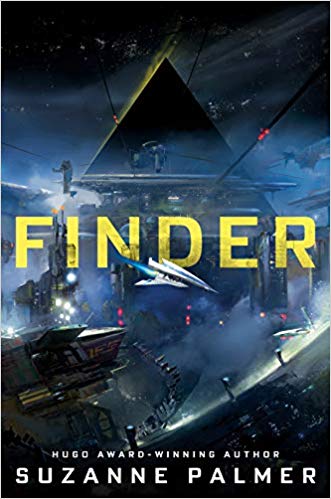 Finder by
Finder by  Doctor Who: Scratchman by
Doctor Who: Scratchman by 
 Escape Rating A+: This is the point where I simply squee in delight. I had a ball, to the point where I laughed out loud on multiple occasions, often while on a treadmill in the midst of other people who must have thought I was a loon.
Escape Rating A+: This is the point where I simply squee in delight. I had a ball, to the point where I laughed out loud on multiple occasions, often while on a treadmill in the midst of other people who must have thought I was a loon.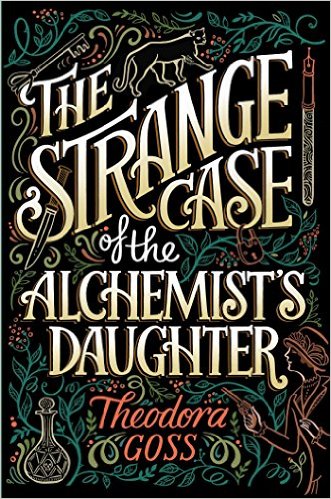 The Strange Case of the Alchemist's Daughter by
The Strange Case of the Alchemist's Daughter by 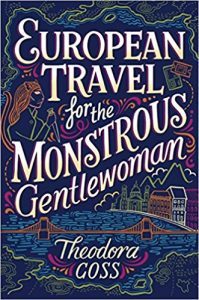 But I found it again, on sale from Audible, and this time dove right in. I was utterly captivated from the very first scene. To the point where about halfway through I couldn’t stand not knowing what came next, and switched from the marvelous audio to the book so I could finish faster. And immediately got the second book (
But I found it again, on sale from Audible, and this time dove right in. I was utterly captivated from the very first scene. To the point where about halfway through I couldn’t stand not knowing what came next, and switched from the marvelous audio to the book so I could finish faster. And immediately got the second book (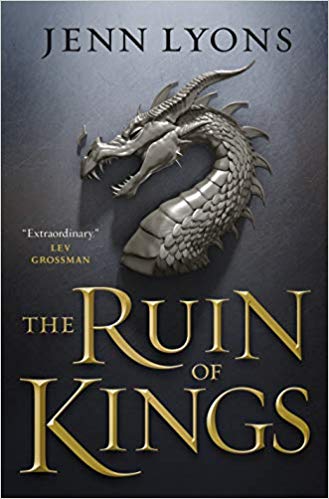 The Ruin of Kings (A Chorus of Dragons, #1) by
The Ruin of Kings (A Chorus of Dragons, #1) by 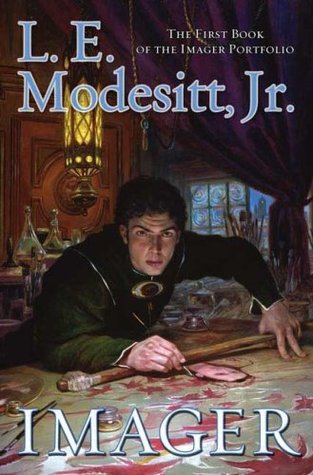 Imager (Imager Portfolio, #1) by
Imager (Imager Portfolio, #1) by 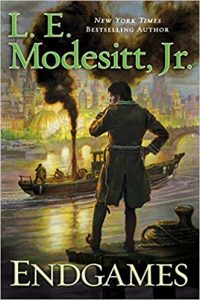 This was a re-read for me. I first read Imager when it originally came out in 2009 because the cataloger in the next office was cataloging it and said it looked good. He was right. In fact, he was so right that I continued to read the series over the next decade. I finished the current final book in the series,
This was a re-read for me. I first read Imager when it originally came out in 2009 because the cataloger in the next office was cataloging it and said it looked good. He was right. In fact, he was so right that I continued to read the series over the next decade. I finished the current final book in the series, 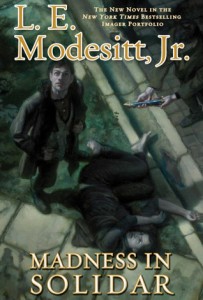 Within the opening chapters of Imager, I was both pleased to learn that the earlier history of Terahnar, and the country of Solidar, was anticipated from the beginning. Rhenn tours the Council Chateau with his father, and sees portraits of both Rex Regis, the man who becomes Rex in the Quaeryt Quintet, and Rex Defou, the Rex who is overthrown in
Within the opening chapters of Imager, I was both pleased to learn that the earlier history of Terahnar, and the country of Solidar, was anticipated from the beginning. Rhenn tours the Council Chateau with his father, and sees portraits of both Rex Regis, the man who becomes Rex in the Quaeryt Quintet, and Rex Defou, the Rex who is overthrown in 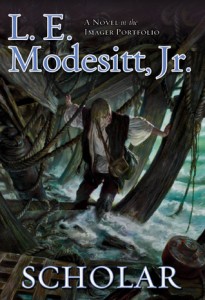 As much as I wanted to slap his mother silly, it’s Rhenn’s story that I came to see. Or rather hear. It does feel like it fits in its proper place in this history, and follows very well after finishing Endgames.
As much as I wanted to slap his mother silly, it’s Rhenn’s story that I came to see. Or rather hear. It does feel like it fits in its proper place in this history, and follows very well after finishing Endgames.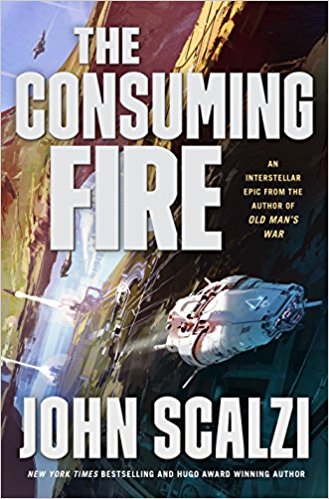 The Consuming Fire (The Interdependency #2) by
The Consuming Fire (The Interdependency #2) by 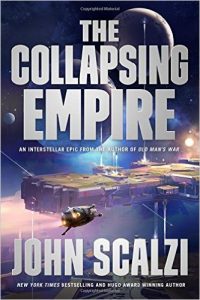 But it isn’t. The Flow is collapsing – hence the title of the first book in the series,
But it isn’t. The Flow is collapsing – hence the title of the first book in the series, 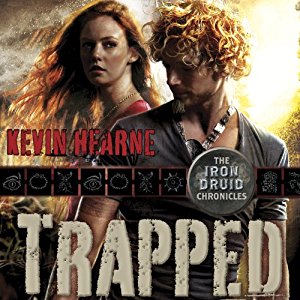 Trapped (The Iron Druid Chronicles, #5) by
Trapped (The Iron Druid Chronicles, #5) by 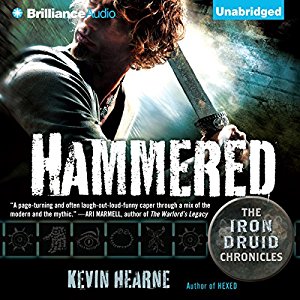 After all, back in
After all, back in 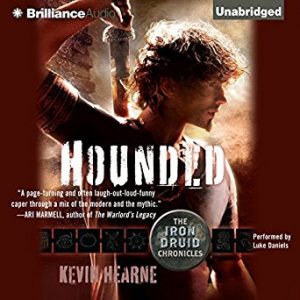 Escape Rating B+: Like all of the
Escape Rating B+: Like all of the 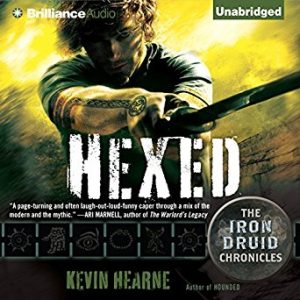 Bacchus is after him because Atticus killed a whole bunch of his baccantes back in
Bacchus is after him because Atticus killed a whole bunch of his baccantes back in  Fair warning, it ends on a cliffhanger of truly epic proportions! But that’s OK, because I’ve already got
Fair warning, it ends on a cliffhanger of truly epic proportions! But that’s OK, because I’ve already got 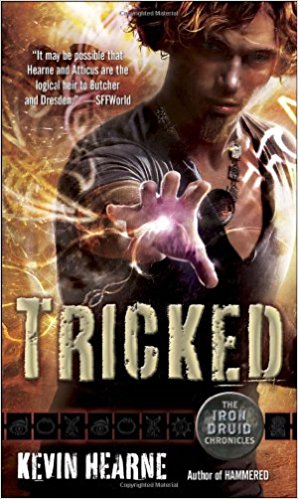 Tricked (The Iron Druid Chronicles, #4) by
Tricked (The Iron Druid Chronicles, #4) by 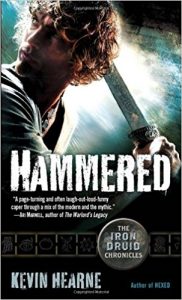 In
In 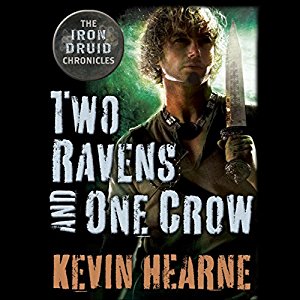 As snarky as Atticus is, this story is still much darker in tone than the first two books in the series,
As snarky as Atticus is, this story is still much darker in tone than the first two books in the series, 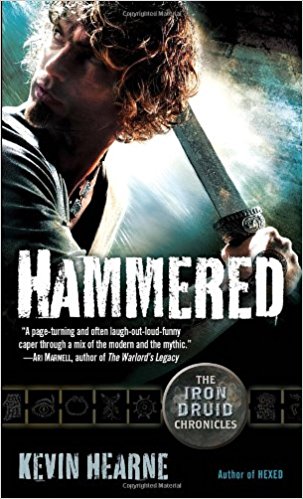 Hammered (The Iron Druid Chronicles, #3) by
Hammered (The Iron Druid Chronicles, #3) by 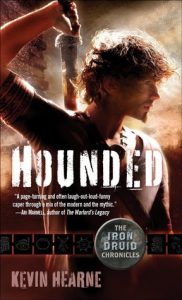 Hammered feels like the “turning point” book in the
Hammered feels like the “turning point” book in the 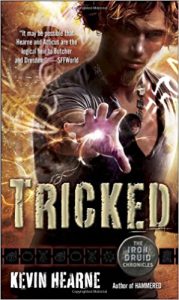 I have a feeling that the events in Hammered are going to be crucial for the events in the next several books, And I can’t wait to find out. I’ve already got the audio of the next book,
I have a feeling that the events in Hammered are going to be crucial for the events in the next several books, And I can’t wait to find out. I’ve already got the audio of the next book,